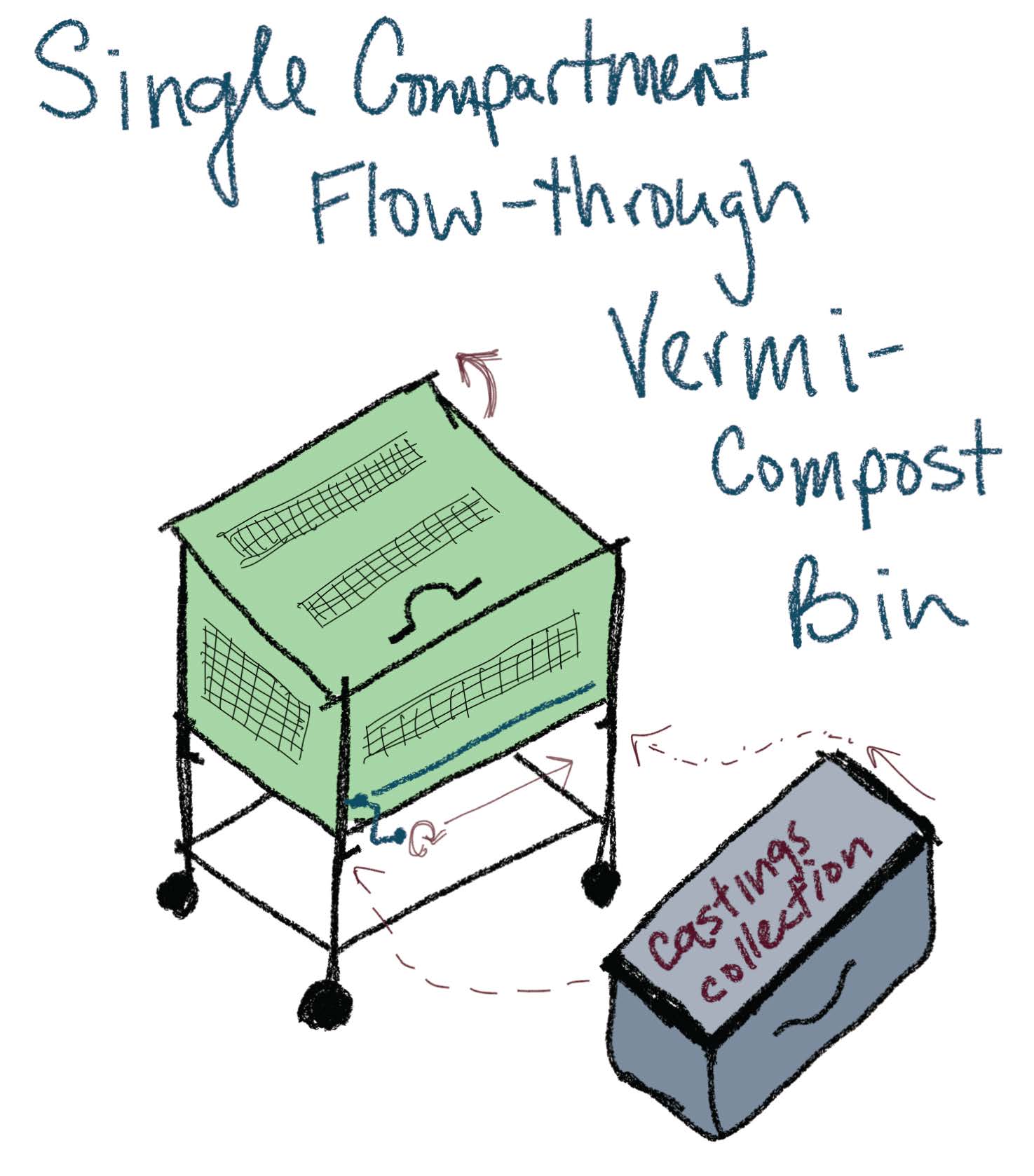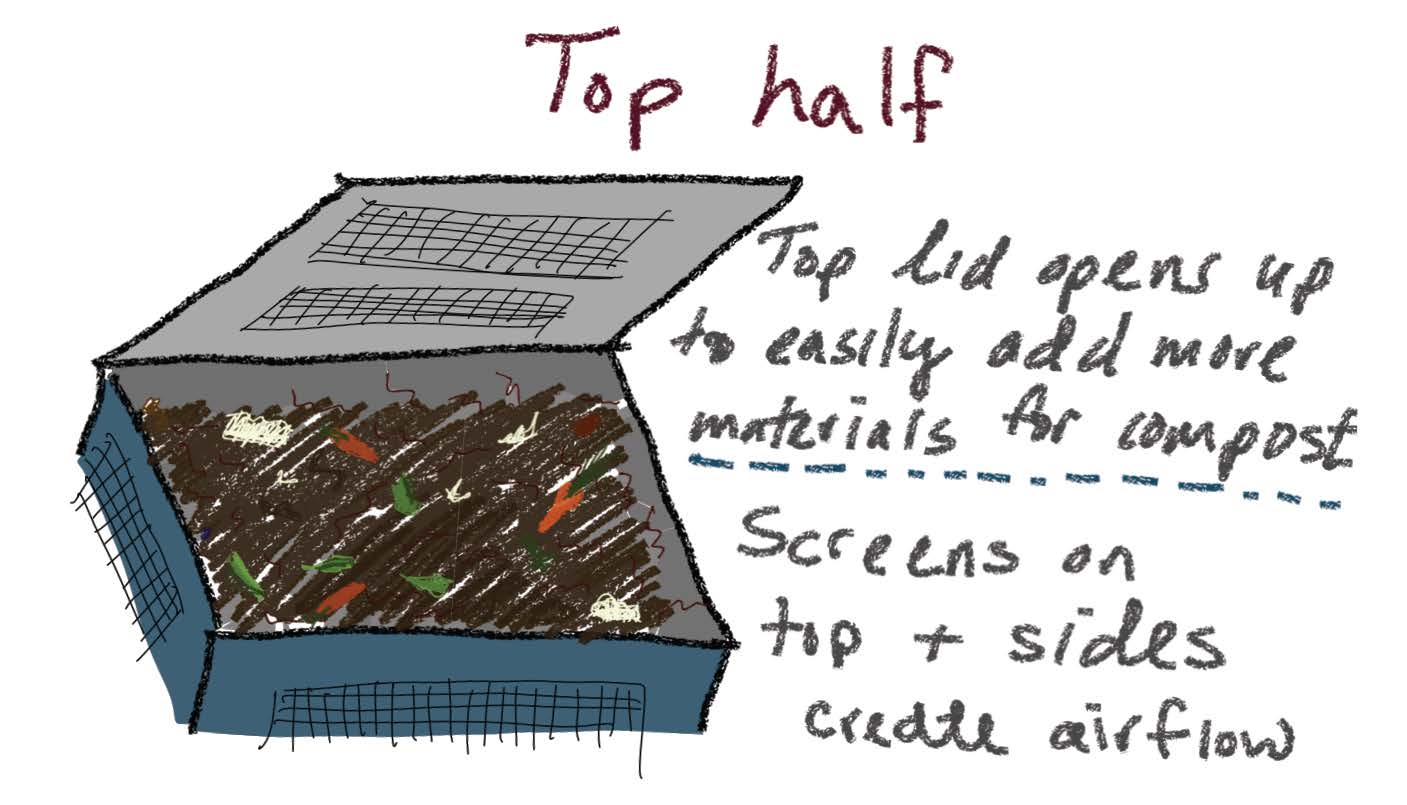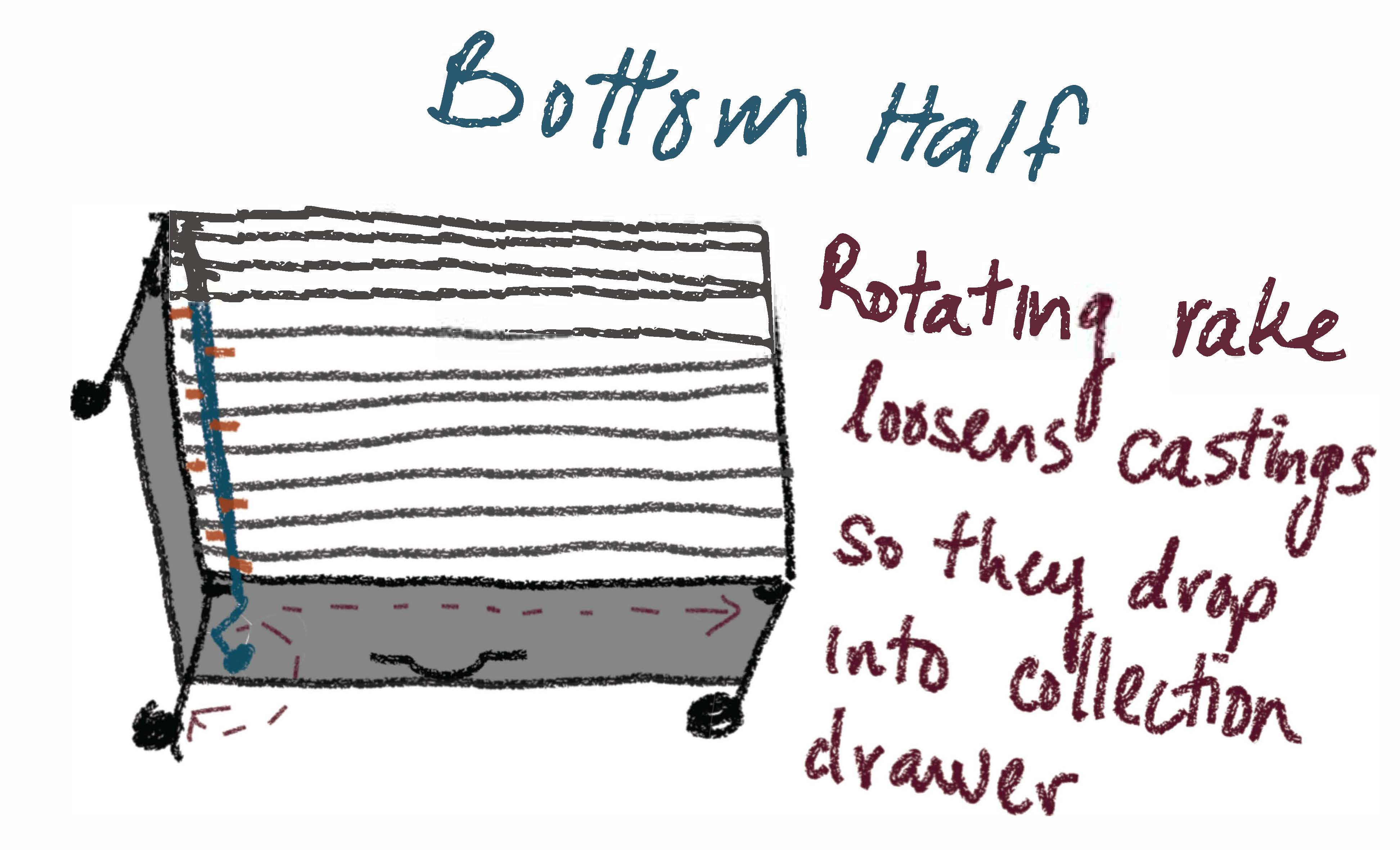How To Make (Almost) Anything Neil Gershenfeld
MCKENZIE ROSS HUMANN
MIT Department of Urban Studies and Planning
FINAL PROJECT PLANNING
09.14.22

Our current worm composting set up. Two bins stacked on top of each other: the top bin is where all of the action is and has holes at the bottom for leachate to flow into the bottom bin. You can see my harvested castings in the mason jar on the left.

The main components are a top bin where the worms live and feed off of food scraps and paper-products, a harvesting mechanism, and a castings drawer.

The top bin needs to have screens for airflow, an easy open lid, and needs to remain relatively dark.

At the bottom of the composting bin, there is a harvesting mechanism. To harvest the worm-castings, you can roll the rake-like pole that lies on-top of a grate across the grate to loosen up any castings. The castings will then fall down through the grate into the harvesting drawer. The harvesting drawer pulls open and closed and can be used to store castings long-term.